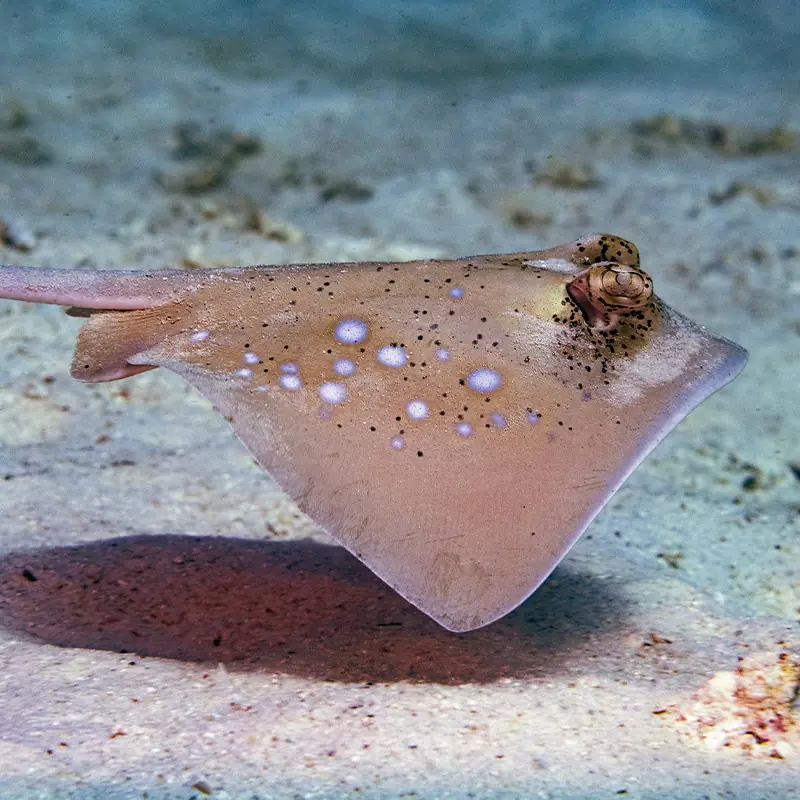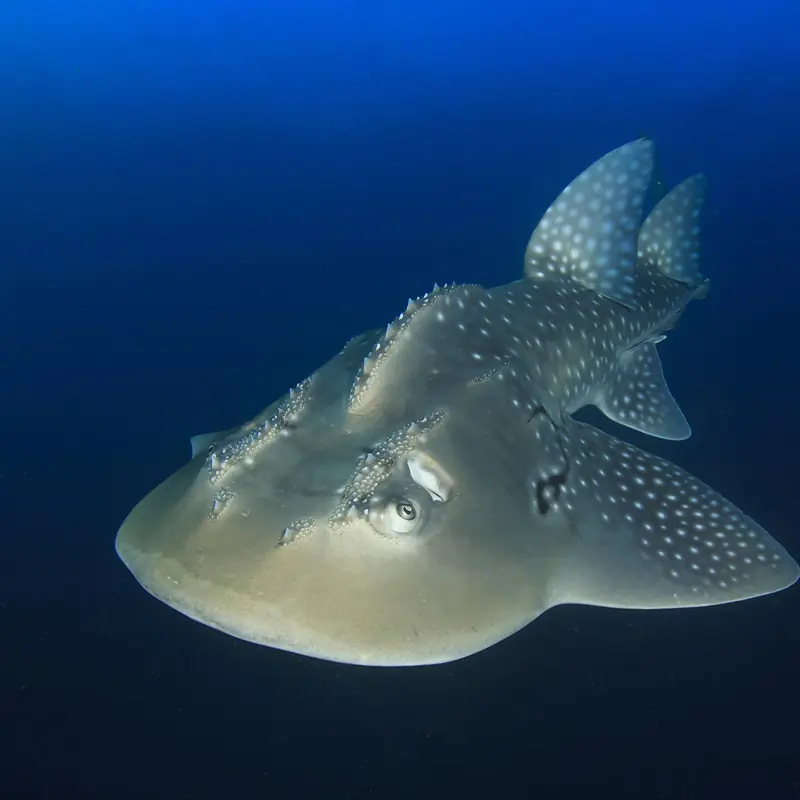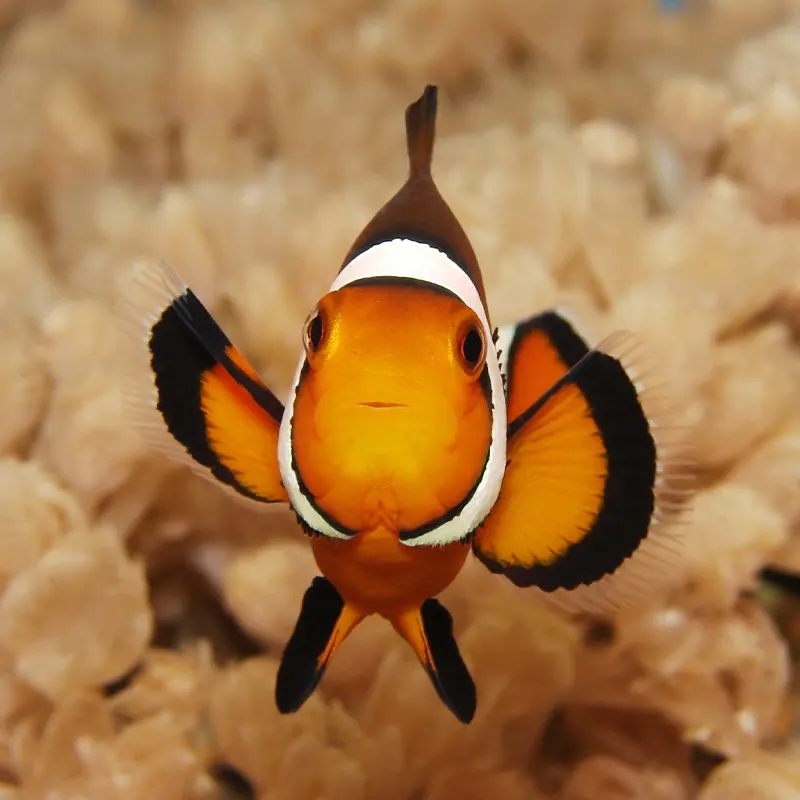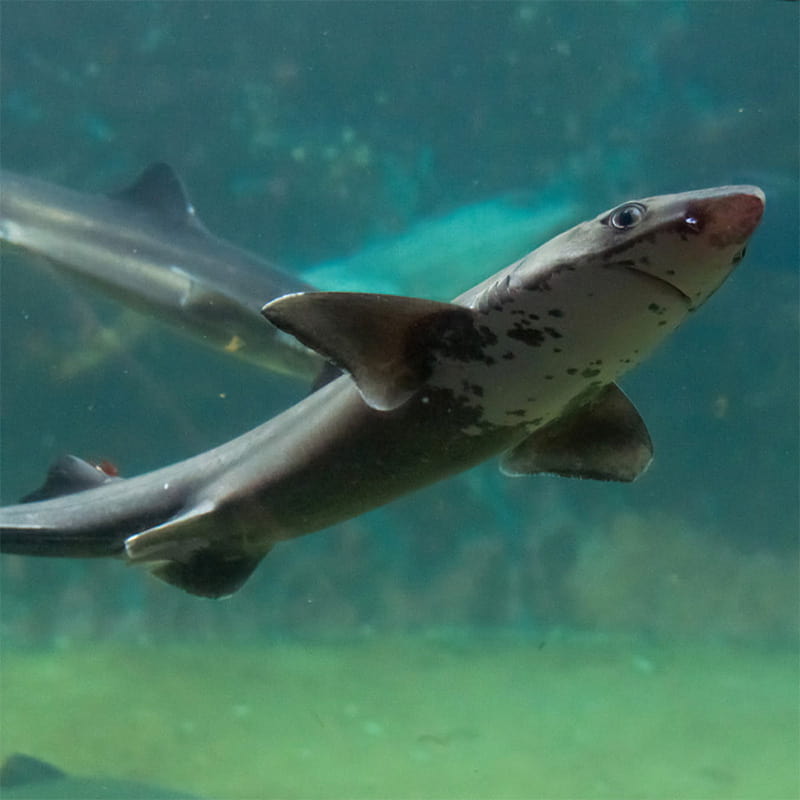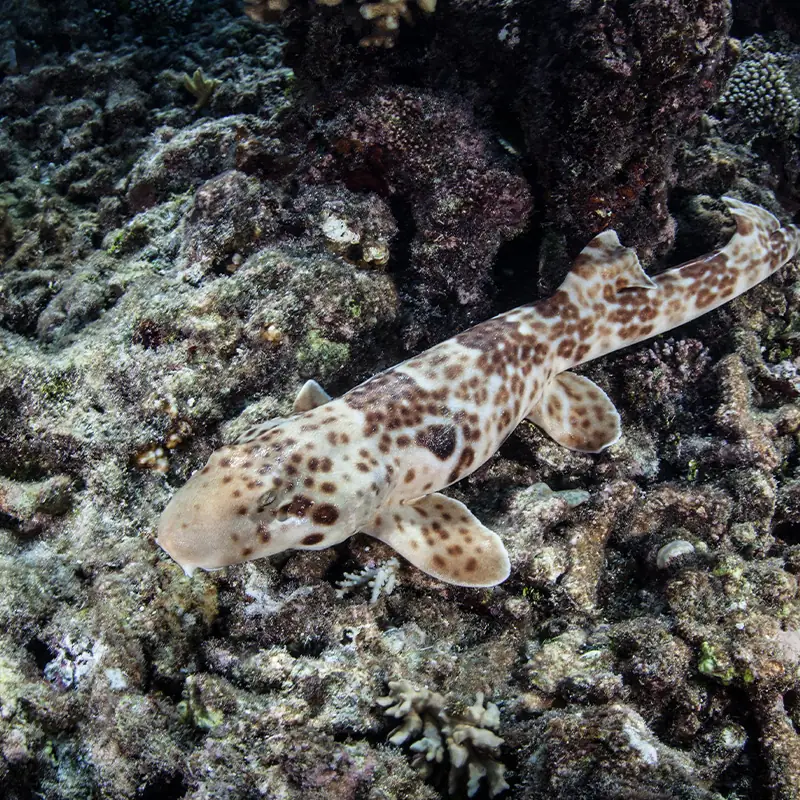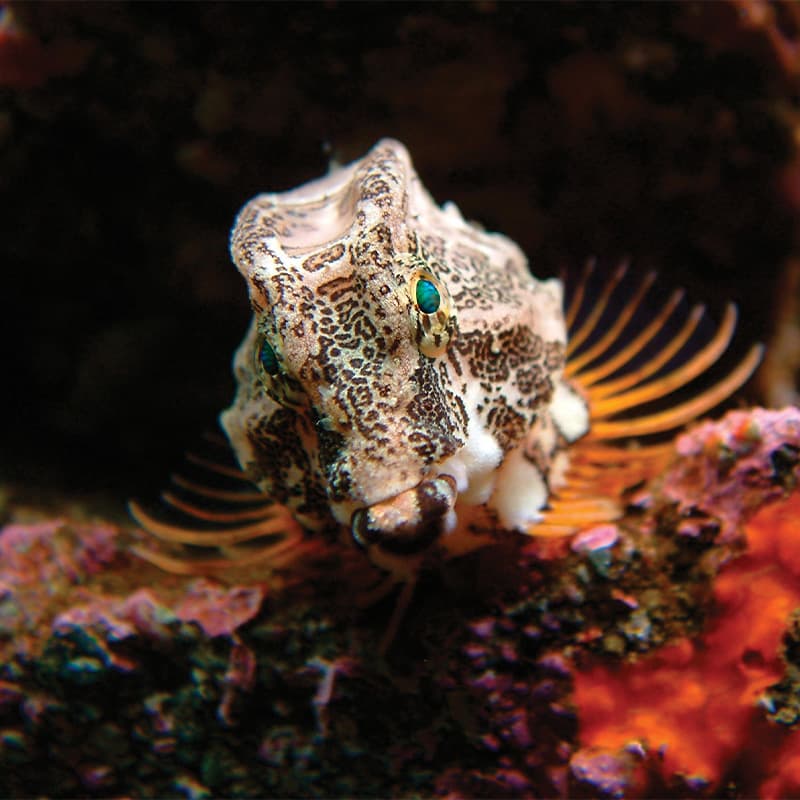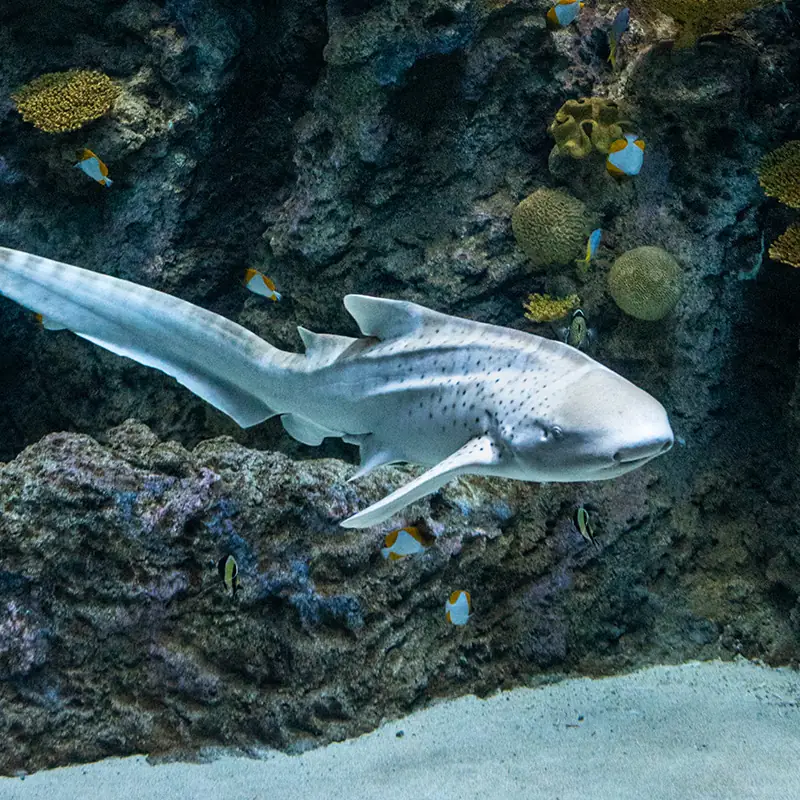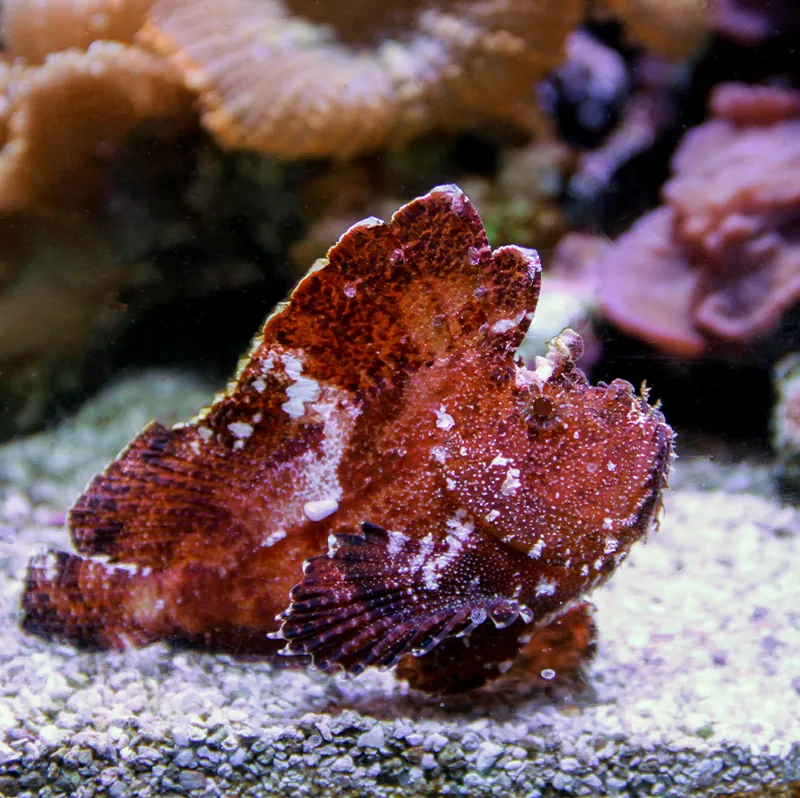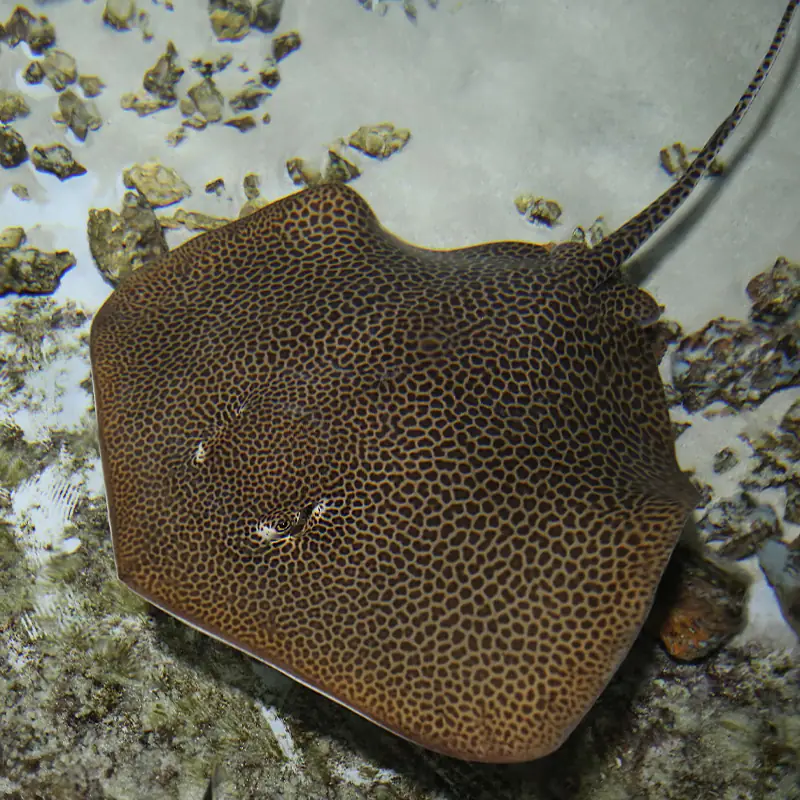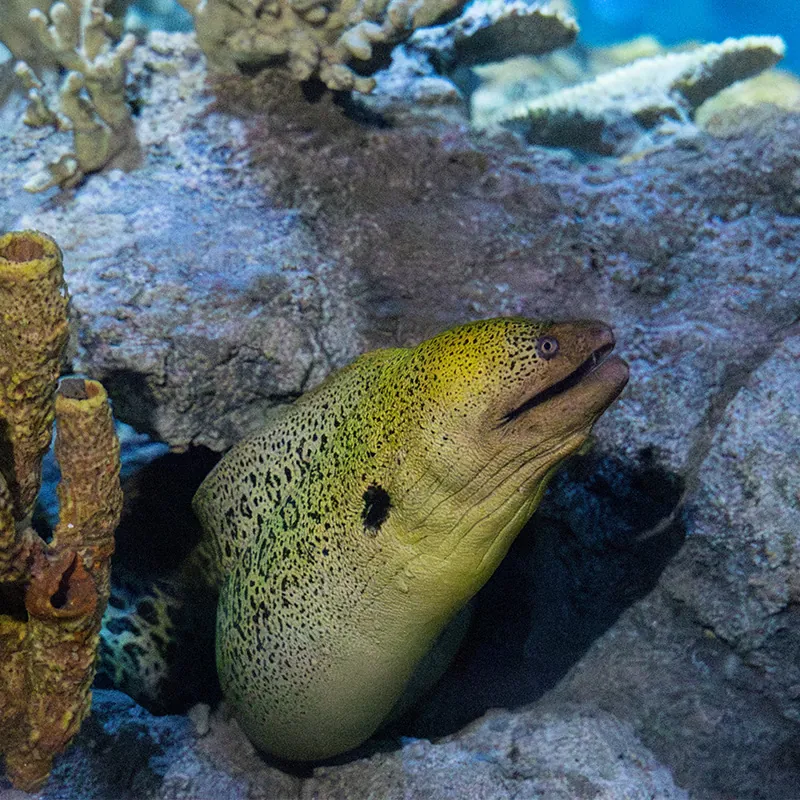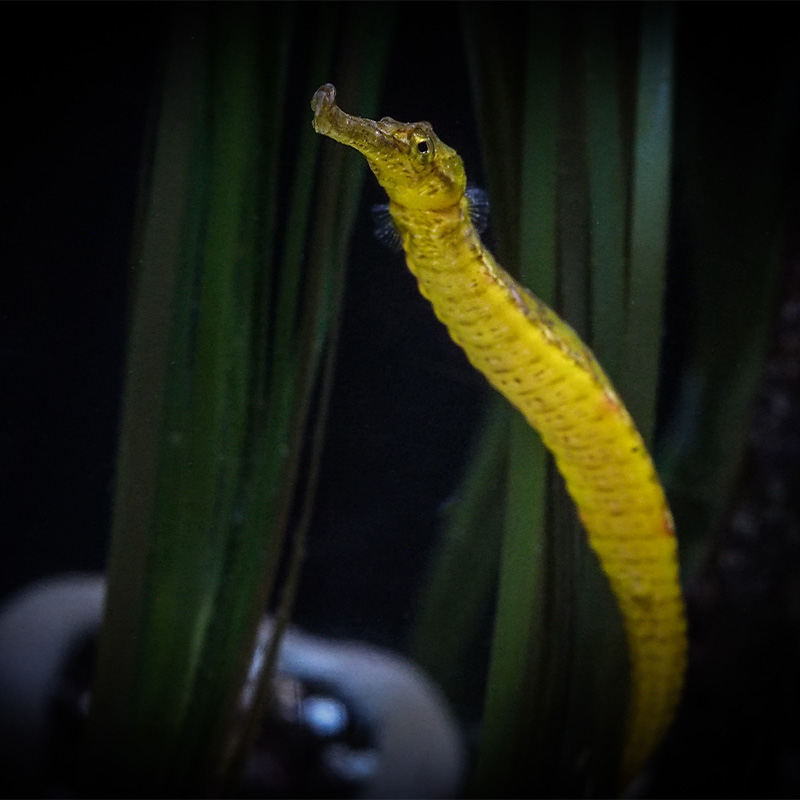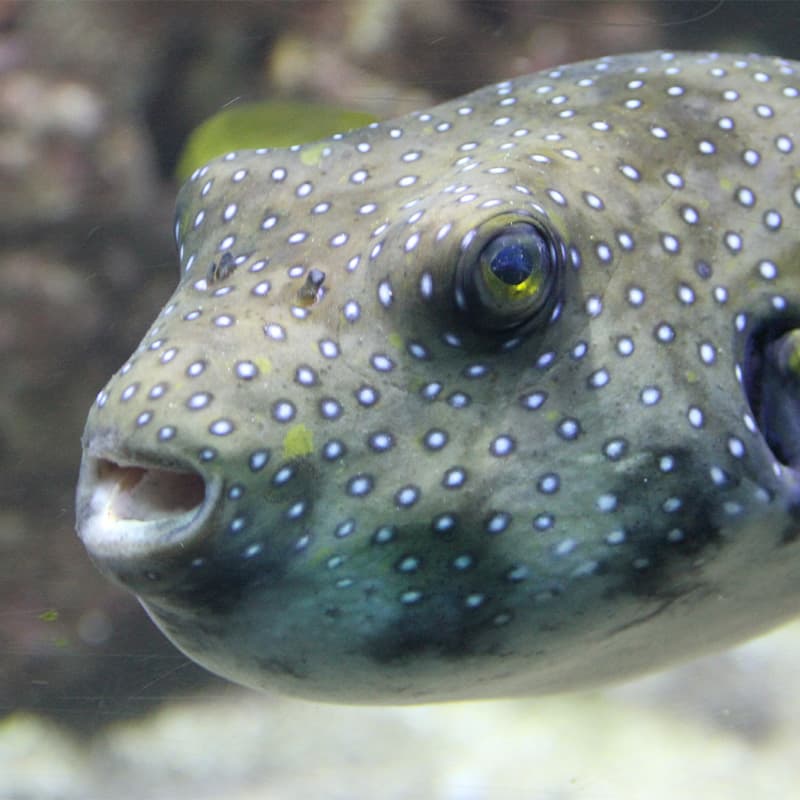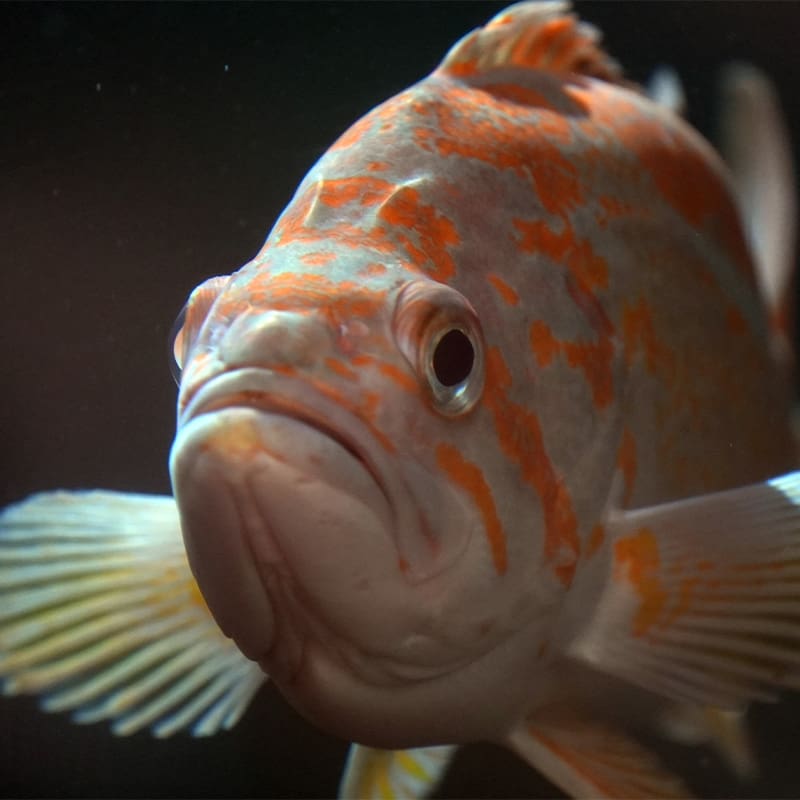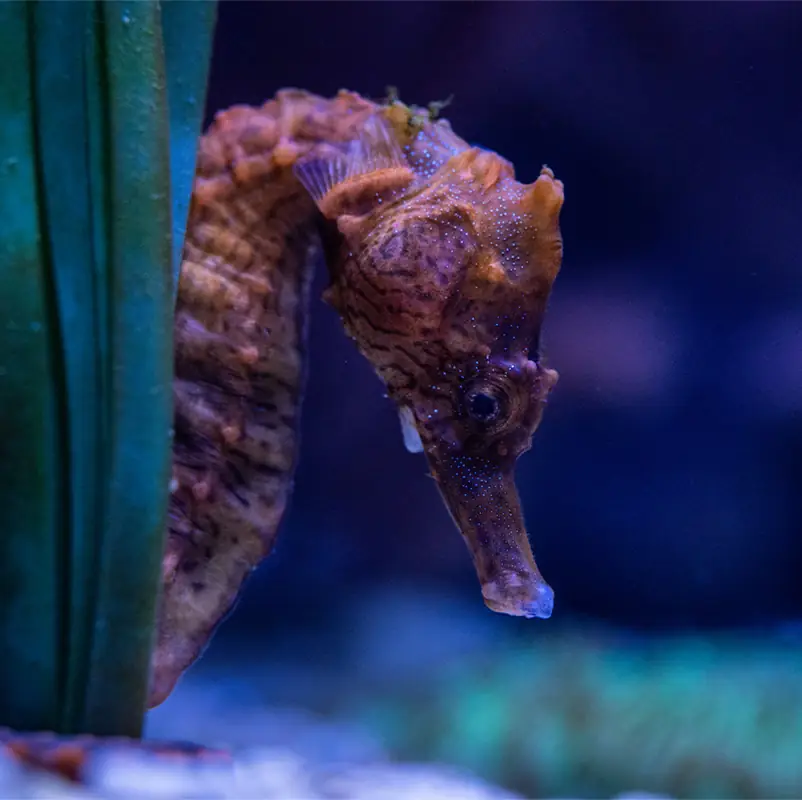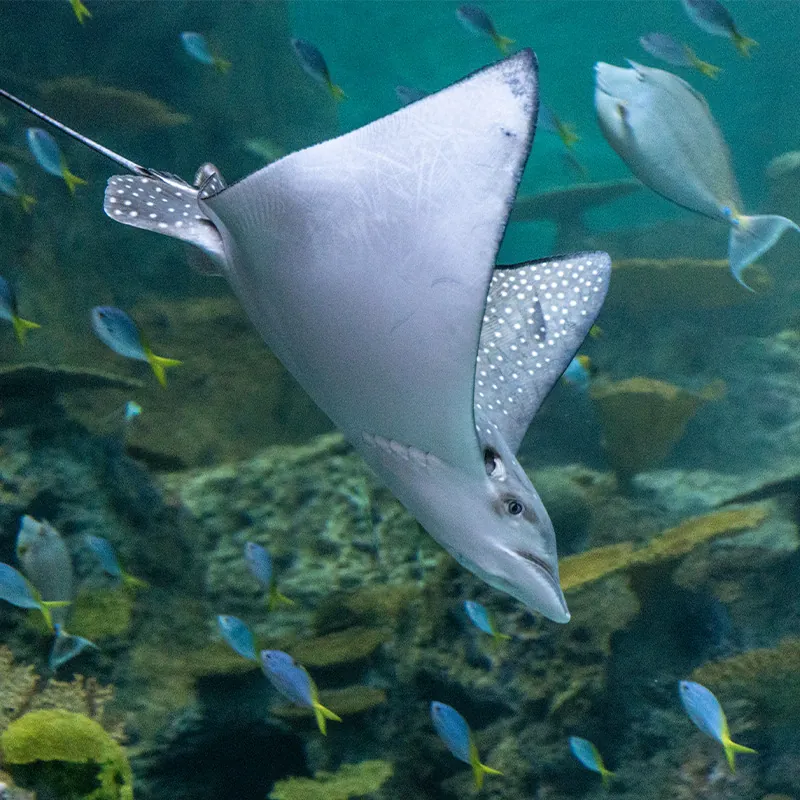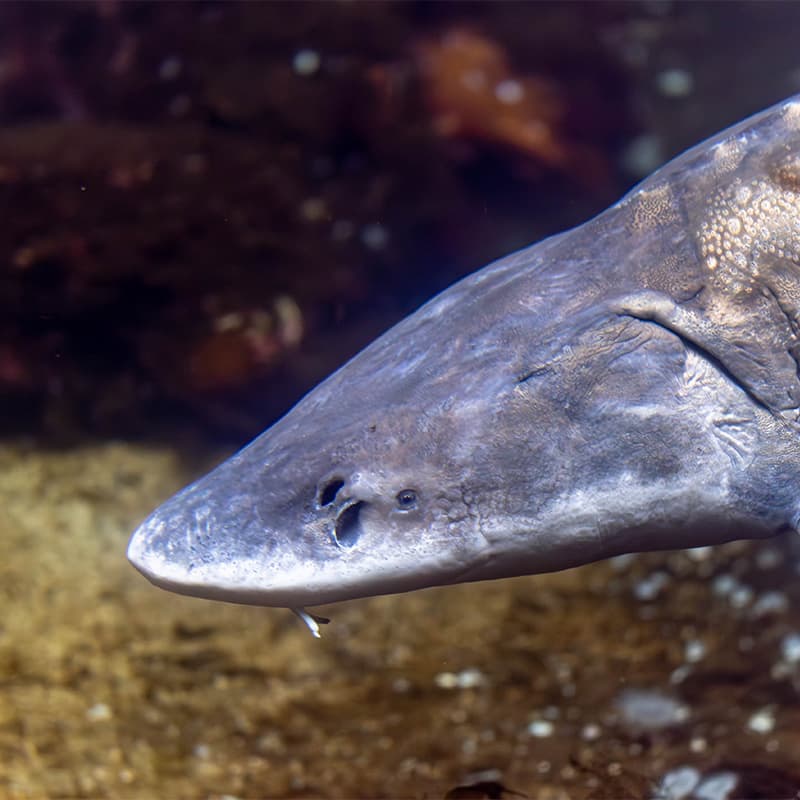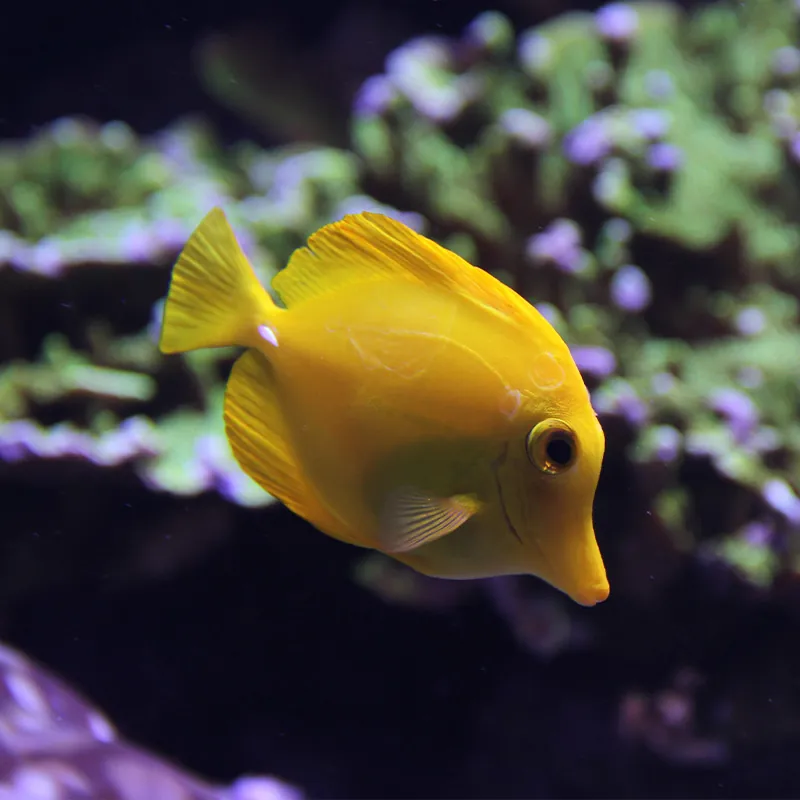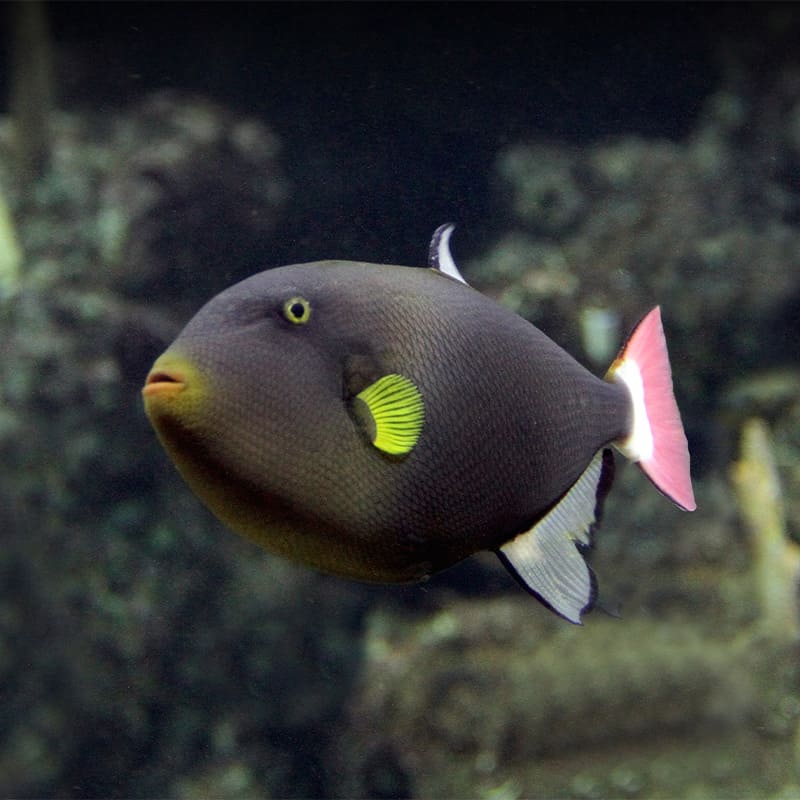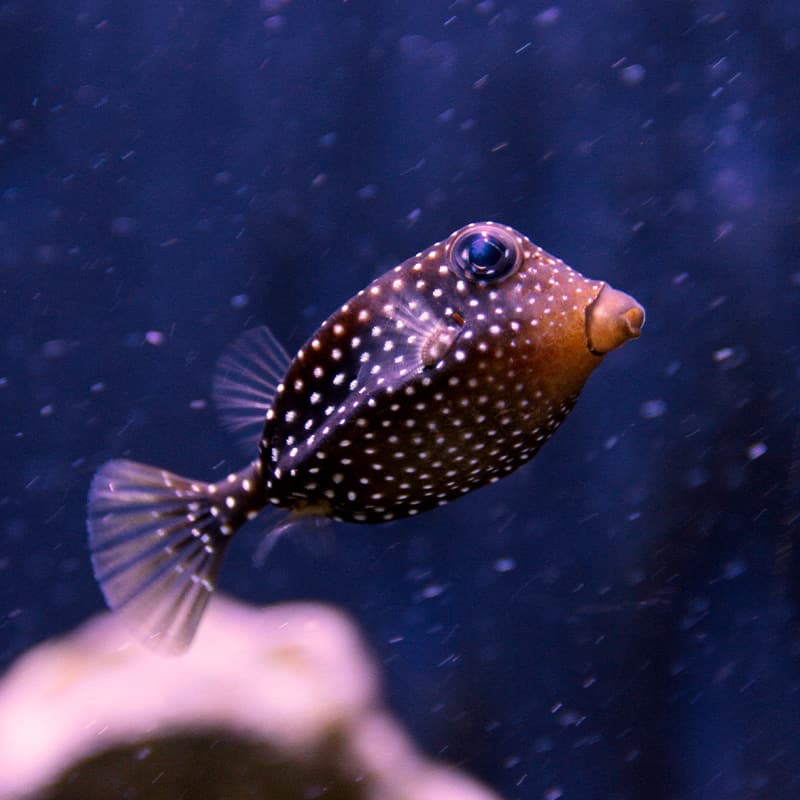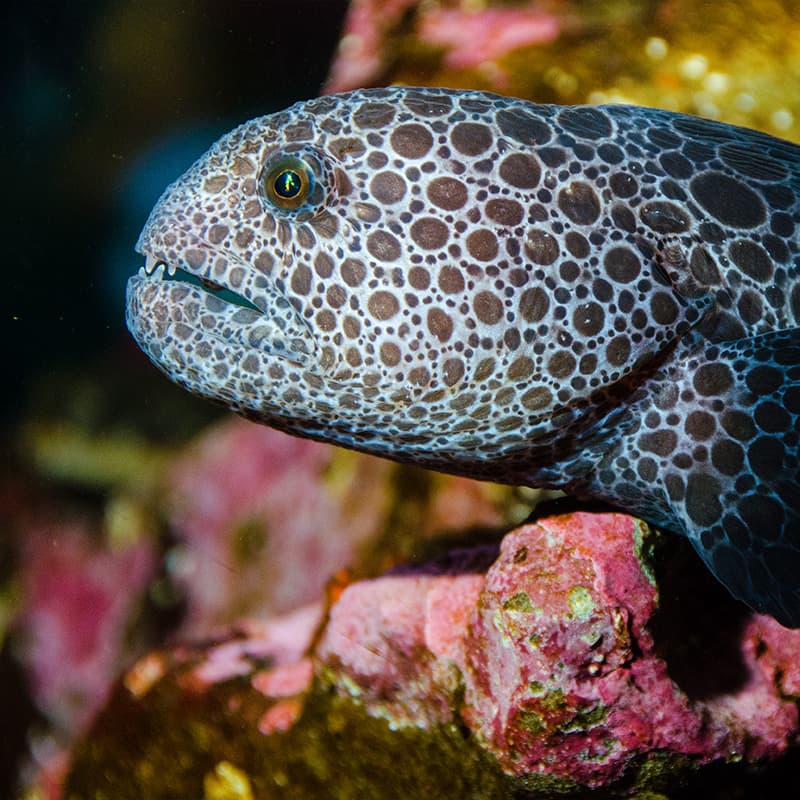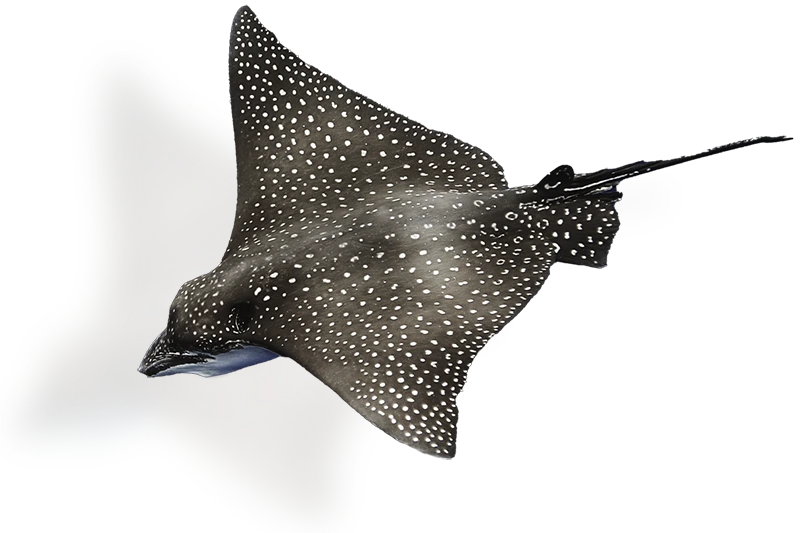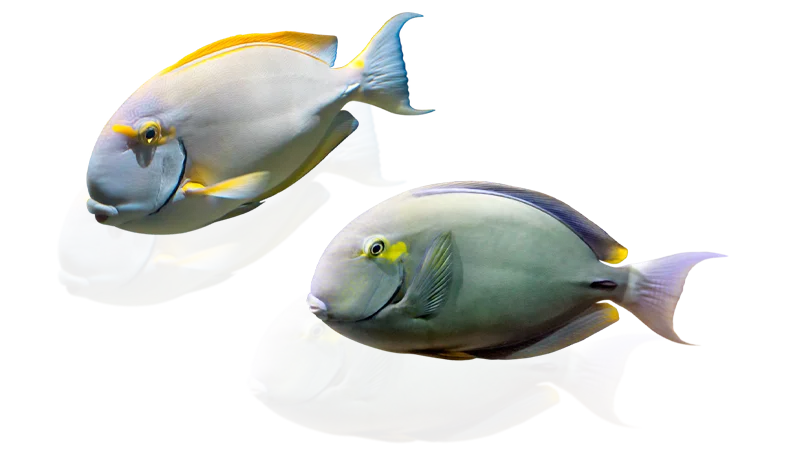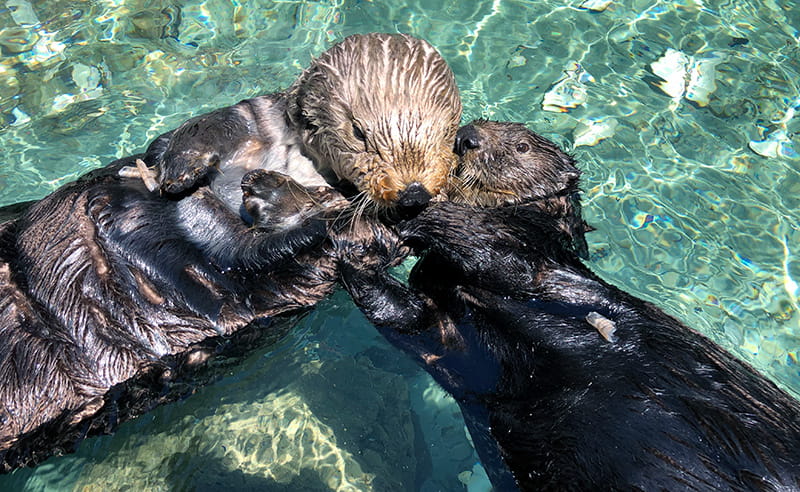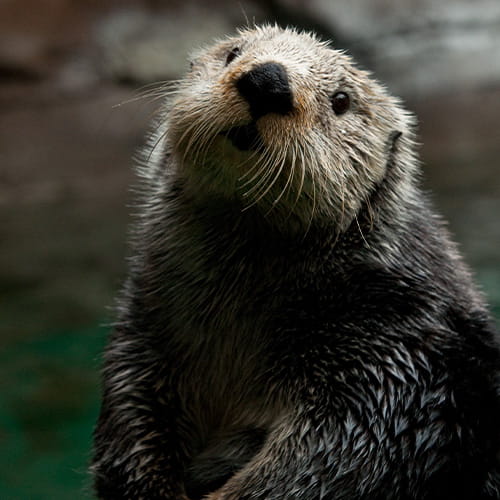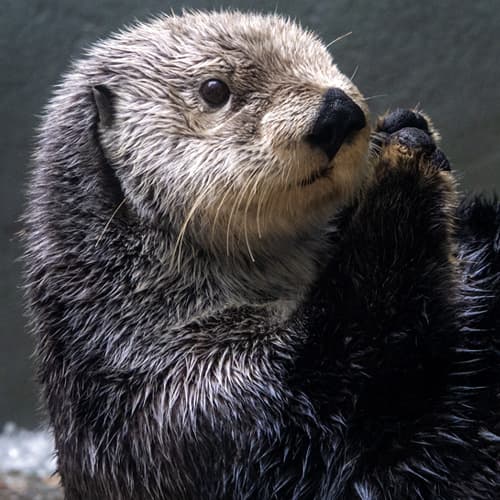- Fish
Salmon
Masters of migration
There are five species of Pacific salmon found here in the Pacific Northwest: chinook, coho, chum, pink and sockeye. These fish are known for their seasonal migration upstream from the ocean to fresh water where they spawn, or reproduce. The Seattle Aquarium is a great place to see and learn about salmon—no matter the season!
At the Aquarium
- Habitats throughout the Aquarium
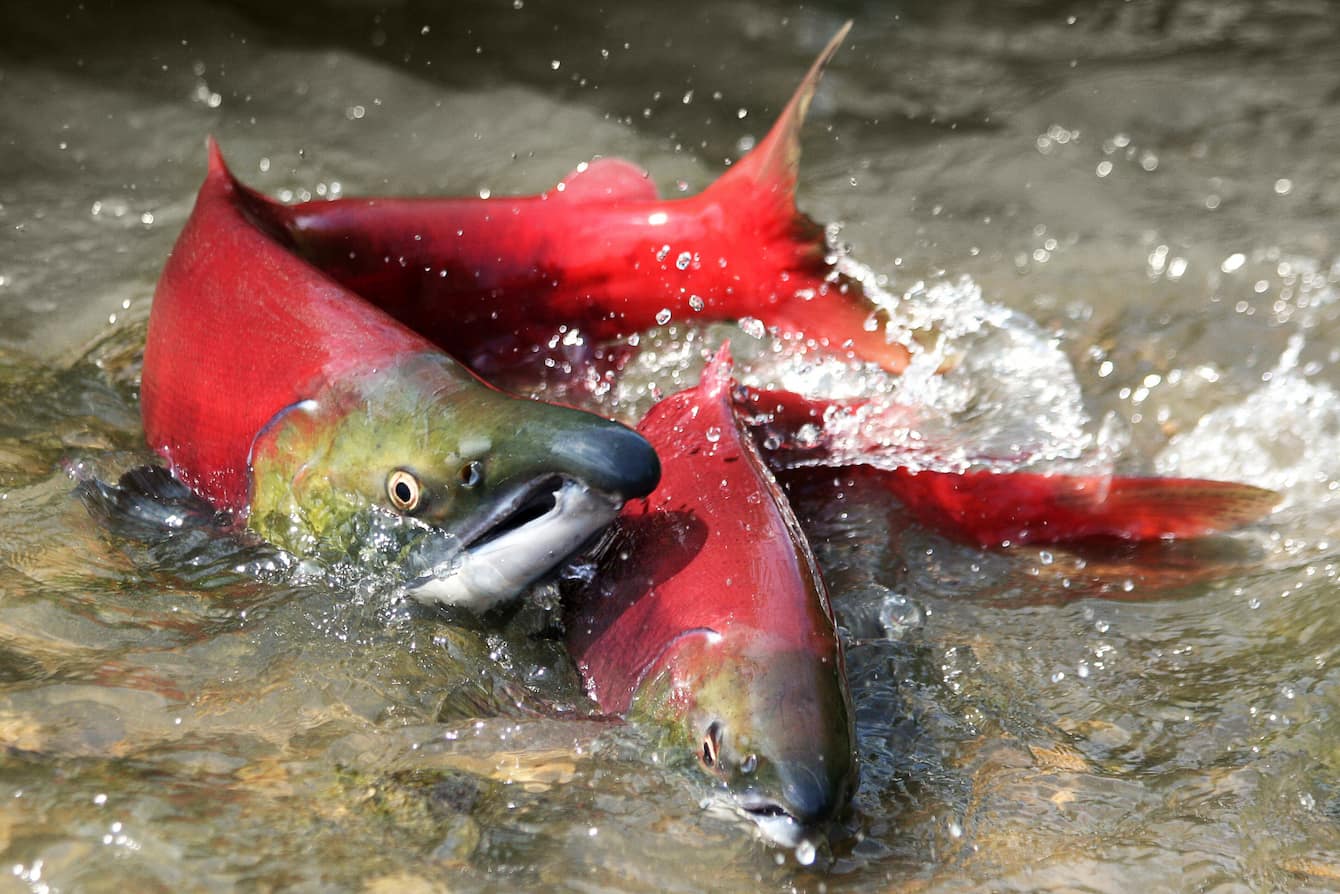
Fresh water? Salt water? Both!
Salmon are anadromous, meaning they’re born in fresh water, migrate to the ocean, and then return to fresh water to reproduce—often to the same stream in which they were born. Their journey to and from the ocean can be hundreds of miles long. Salmon use their sense of smell and the Earth’s magnetic field to guide their migration. Each year, Aquarium naturalists and community members observe and discuss salmon migration through the public Cedar River Salmon Journey.
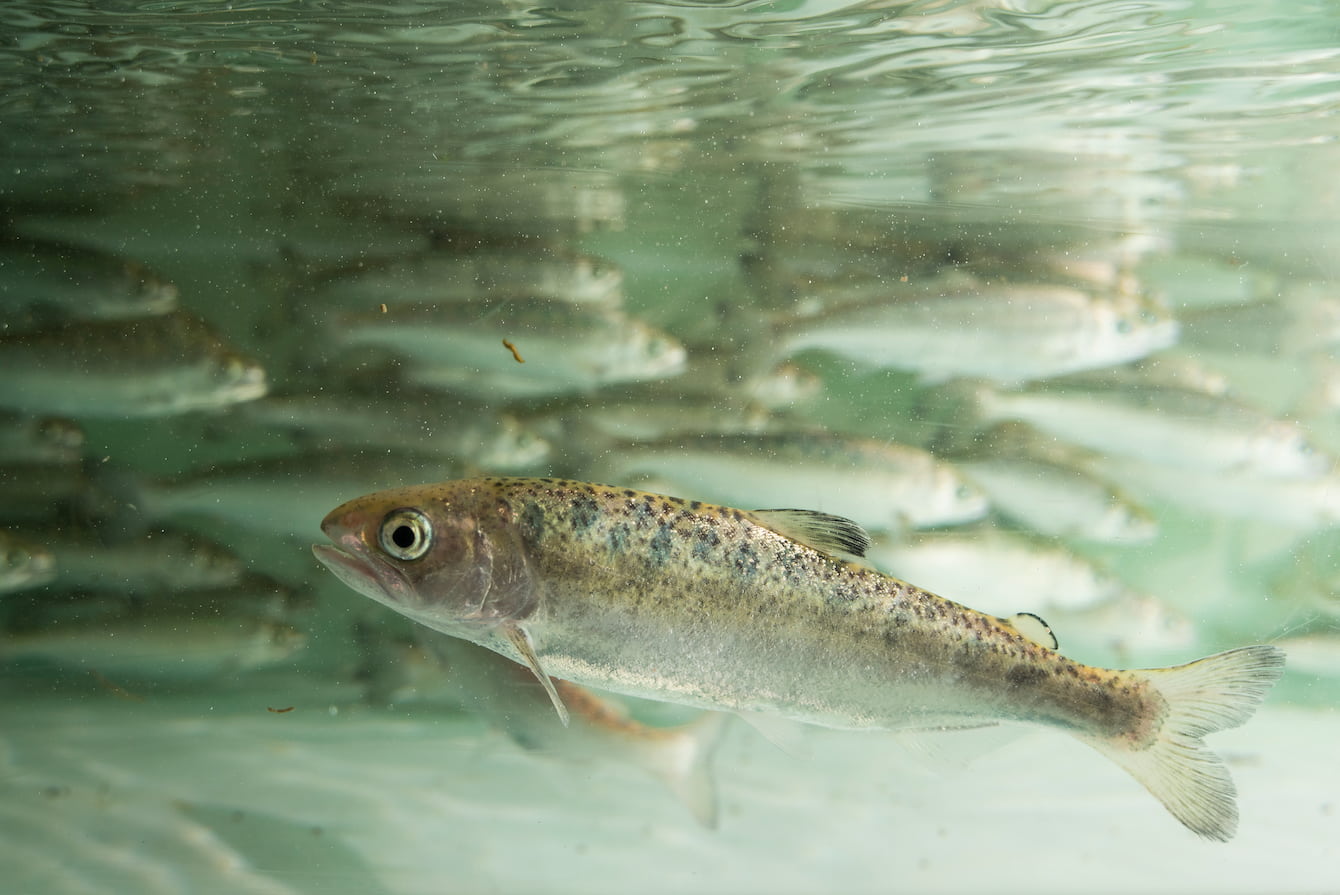
The circle of life
Spawning female salmon may release over 5,000 eggs in nests called redds. But very few of those eggs—from none to just 10—will survive to adulthood. The salmon found in the Pacific Northwest die soon after spawning. Even after their deaths salmon impact their environments. Their bodies deposit essential oceanic nutrients to the streams where they died, sustaining over 100 other species in the process.
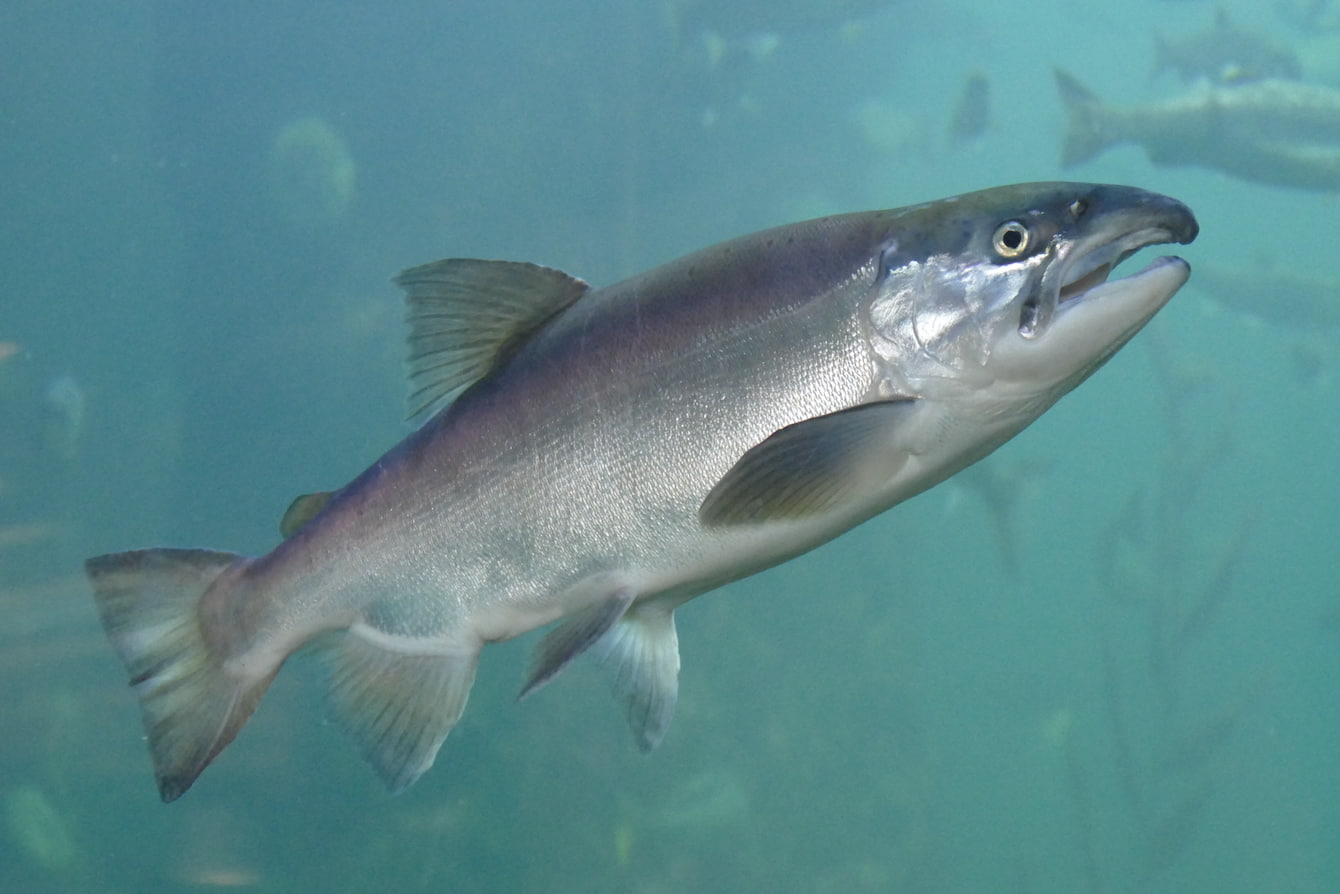
VIF: Very important fish
Salmon are a keystone species, which means they play a critical role in the health and functioning of their ecosystems. Even though their populations are relatively small, salmon impact the wellbeing of many other species. For that reason, the health of salmon can also serve as an indicator of the health of their habitats. Salmon are also an important food source for many species, including southern resident orcas and humans. And they play an integral role in Pacific Northwest tribal cultures.
Salmon struggles
Salmon travel hundreds of miles in their journey to the ocean and back. Along the way, they encounter many threats. In all stages of life, salmon serve as a food source for many species. But human activity has created additional threats to salmon, including habitat loss, climate change, toxic pollution and physical migration barriers like dams and grates.
How to help salmon
Toxic chemicals from tires are deadly for coho salmon. Tires shed these chemicals onto roads, where they are eventually washed into waterways. You can reduce toxic tire runoff by walking, carpooling or taking public transportation. When you drive, make sure to keep your tires properly inflated to reduce wear. Using less plastic is another great way to support local ecosystems. You can even pick up trash along local shores with your family and friends! Check out our Act for the Ocean page to learn more ways to help salmon.
Quick facts
Salmon migrate from fresh water to the ocean and back.
Salmon use their sense of the Earth’s magnetic field when migrating.
Pacific Northwest salmon die after they spawn, or reproduce.
